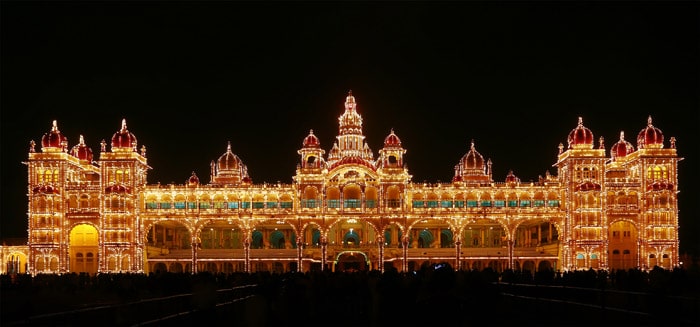A must-see when traveling through South India, the Mysore Royal Palace is a historic palace and the official residence of the Wodeyars, the Maharajas of Mysore, who ruled the principality from 1350 to 1950. It’s a must-visit because it is one of the most popular tourist destinations in India, second only to the Taj Mahal.
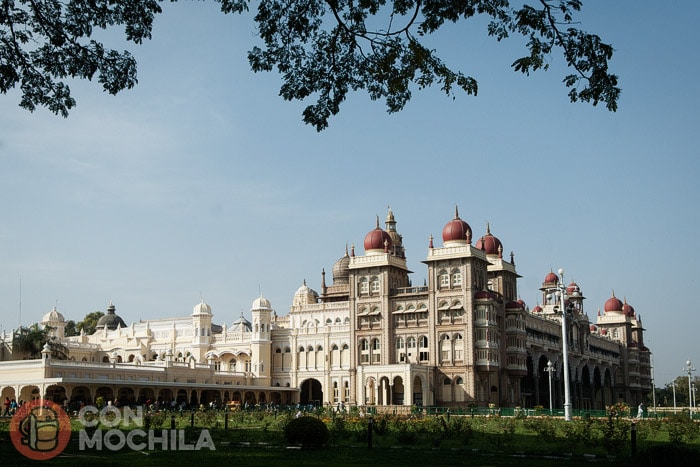
There are several tours available to explore the Mysore Palace and other notable attractions in the city. Choose the one that best fits your travel itinerary.
The history of Mysore Palace stretches back several centuries and is deeply connected to the Wadiyar dynasty, which ruled the Mysore region for over 600 years. The earliest records of the palace date to the 14th century when it was a simple wooden fortress built on Chamundi Hill, overlooking the city.
The construction of the current palace in its basic form began in the 14th century under the Wadiyar dynasty, but it has been expanded and renovated numerous times over the centuries.
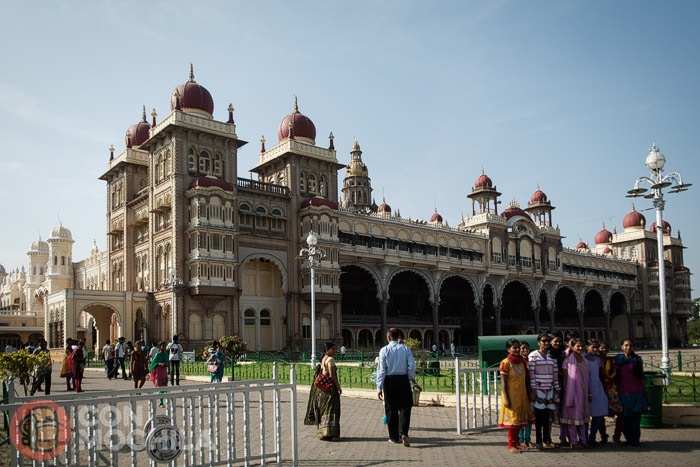
During the colonial period, the Wadiyar dynasty continued to rule the region under British governance, holding the title of Maharajas. The palace remained the official residence of the royal family and the center of royal power during this time.
Located just over 15 minutes on foot from the city center, the Mysore Palace covers a large area, surrounded by courtyards and gardens.
Of the three entrances to the palace grounds, the public entrance is through the southern gate, where you can purchase tickets and begin your visit.
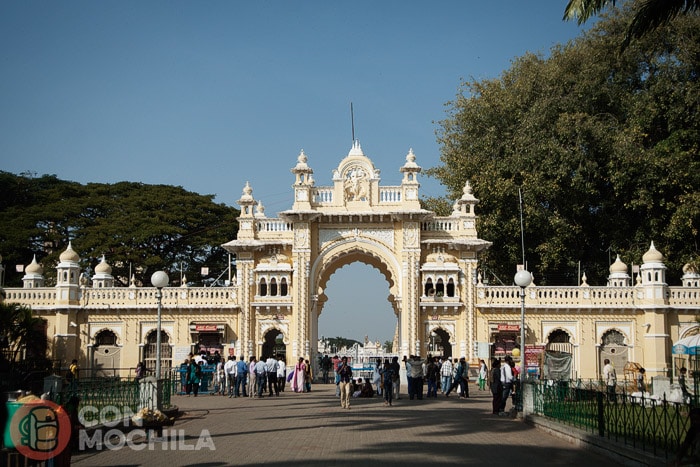
The palace is usually bustling with visitors, and it’s not uncommon, as we experienced, to come across groups of schoolchildren eager to snap photos of tourists as they explore.
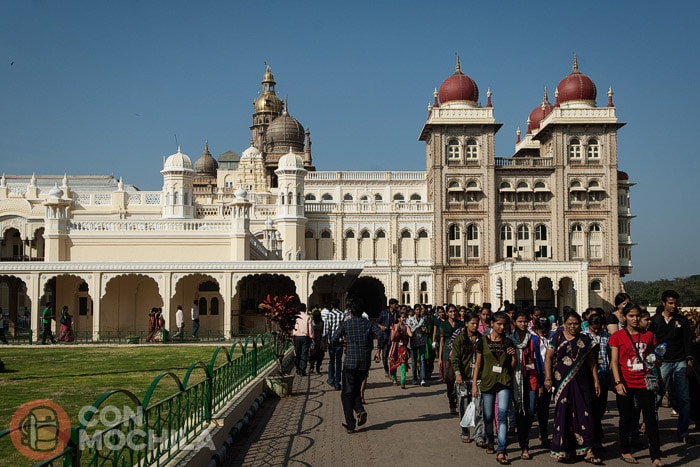
The architectural style of the palace is typically described as Indo-Saracenic, blending elements of Hindu, Muslim, Rajput, and Gothic architecture. The three-story stone structure features marble domes and five-story towers that rise 45 meters high.
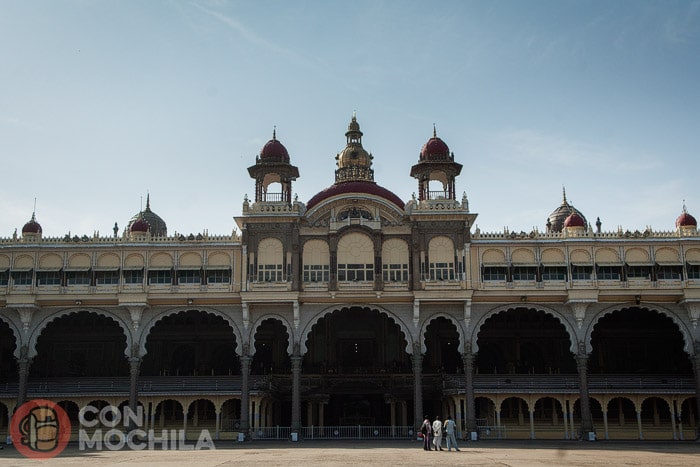
The entrance gate and arch display the emblem and coat of arms of the Kingdom of Mysore, along with the kingdom’s motto in Sanskrit, which translates to “never terrified.”
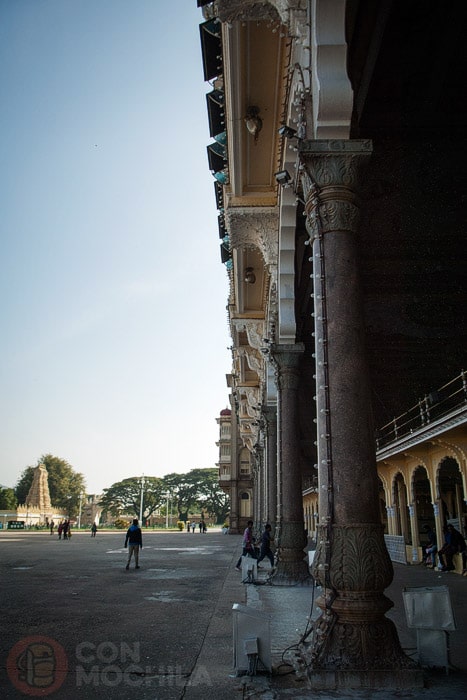
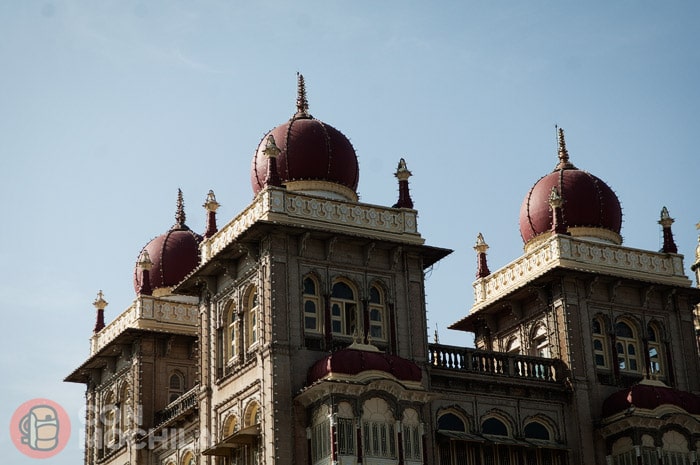
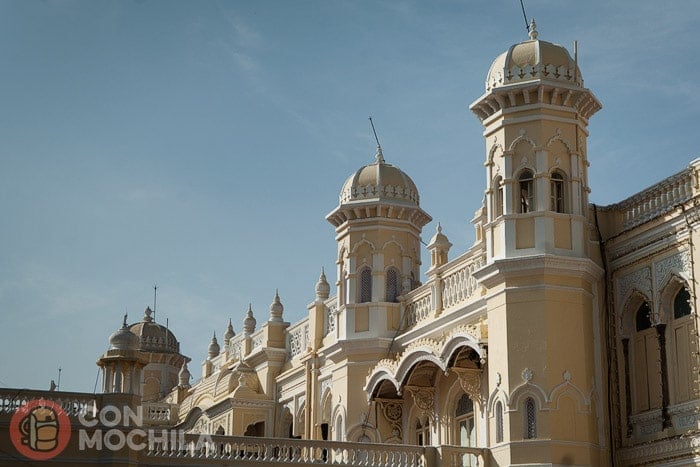
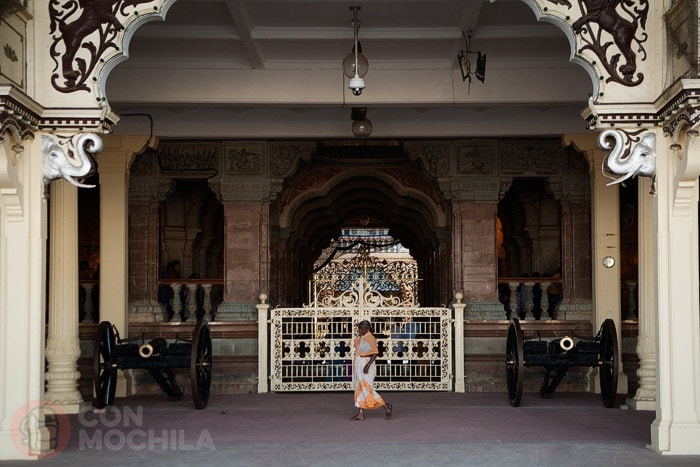
Inside the palace there are several unique rooms, but unfortunately, photography is not permitted, so we were unable to visually capture these spaces. Some notable rooms include:
It’s also worth noting that on Sundays and public holidays, the palace is illuminated by thousands of light bulbs, creating a stunning visual display. Unfortunately, we weren’t able to witness this, but we’ve included a night photograph taken by an Indian photographer to give you a glimpse of this spectacle.
